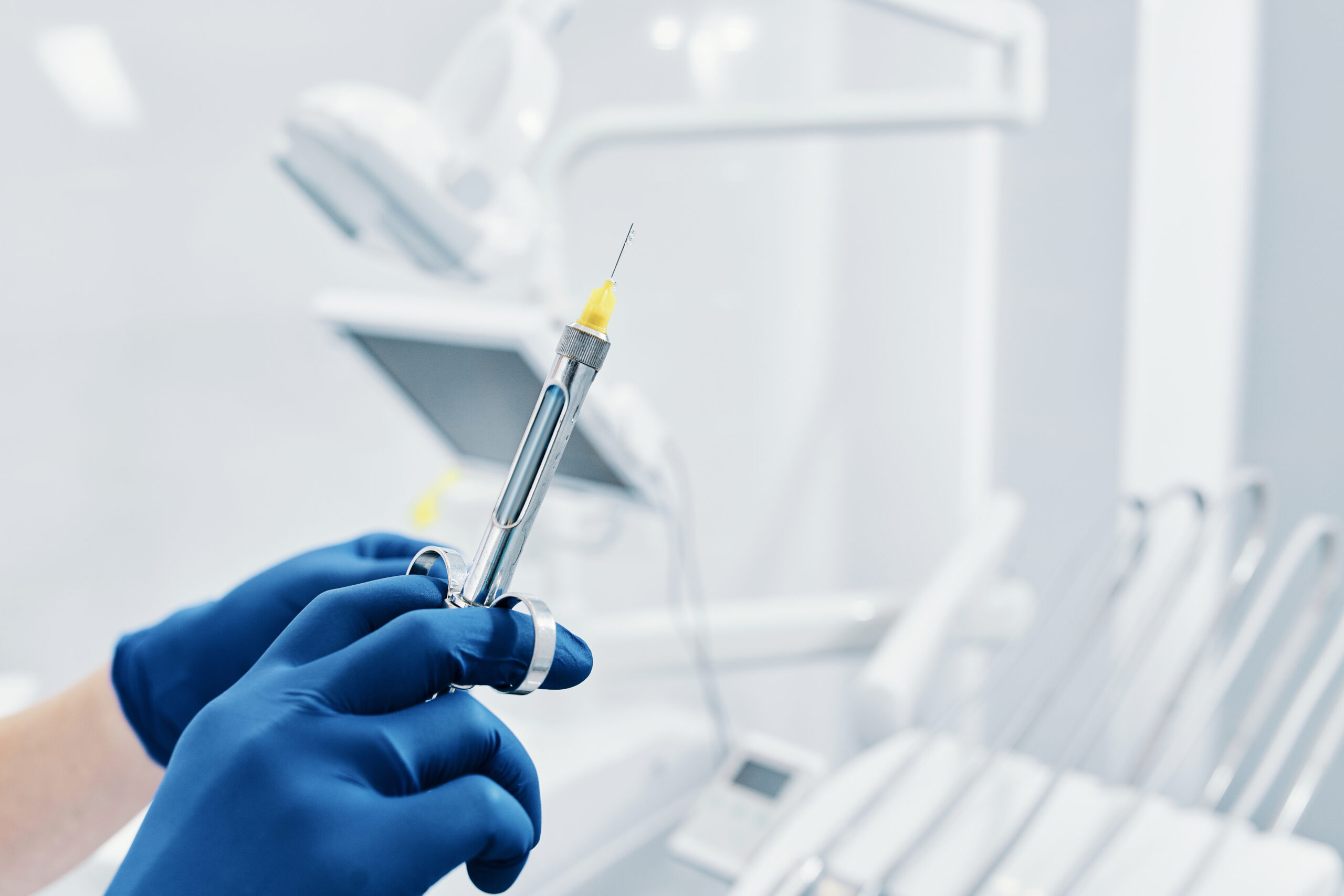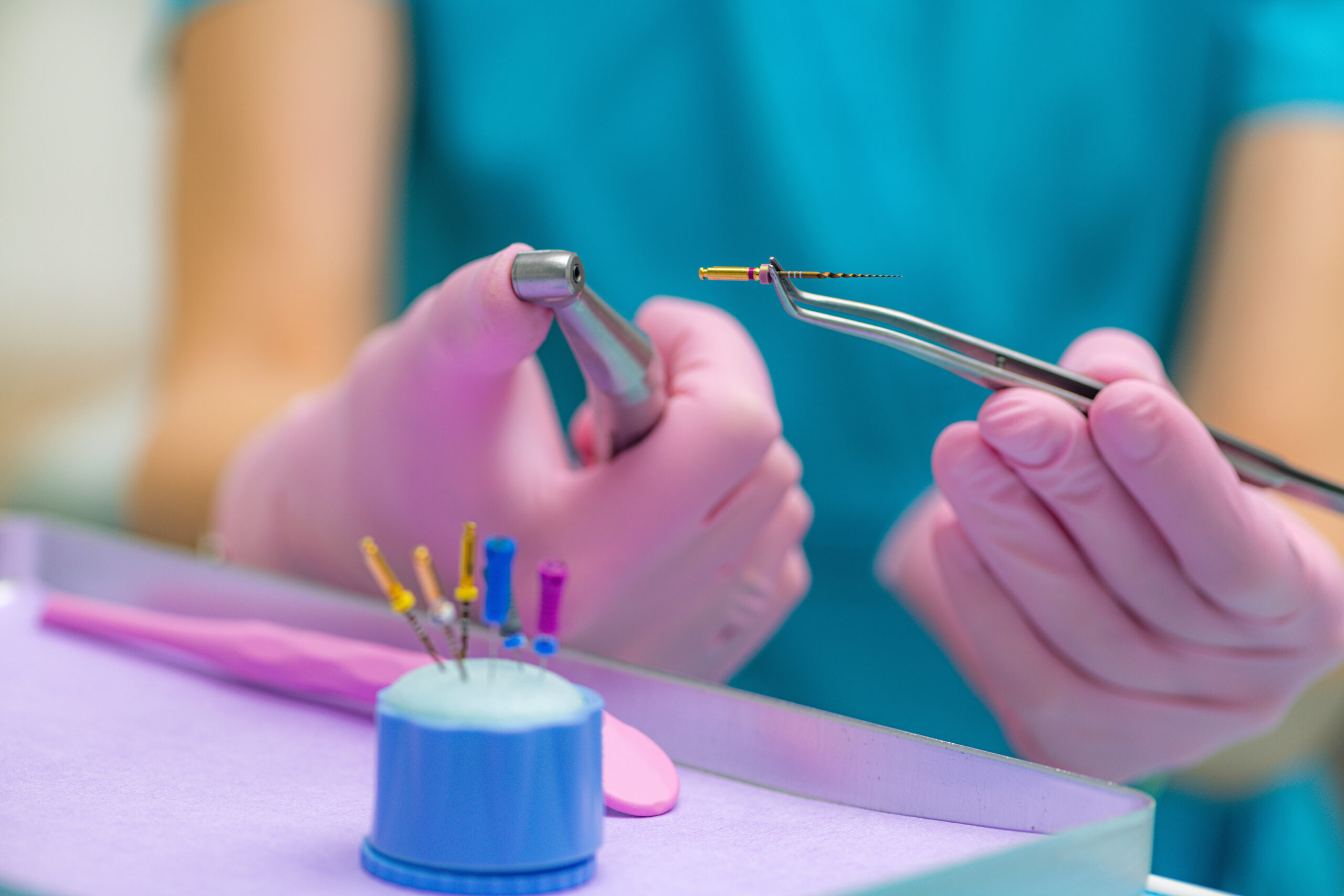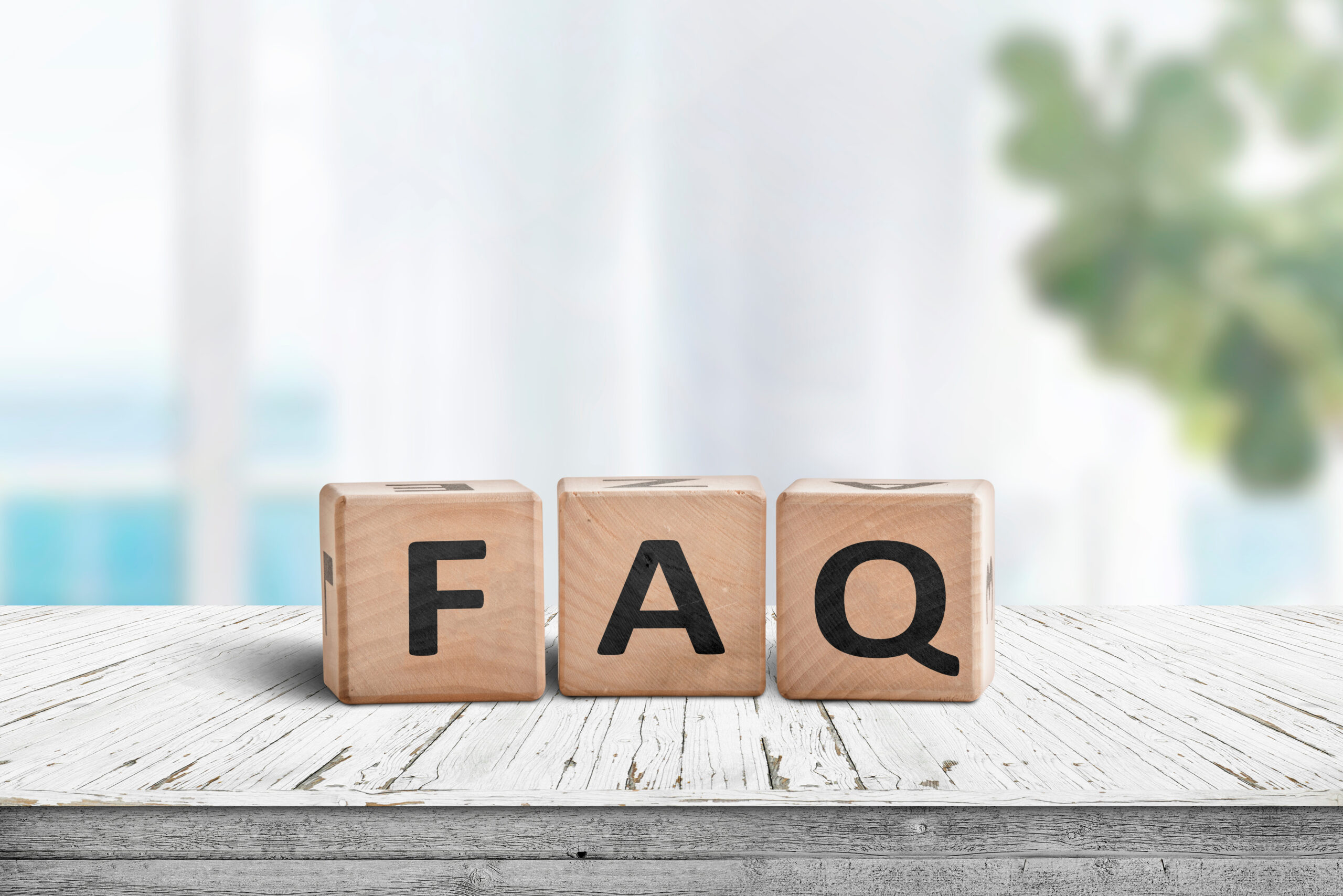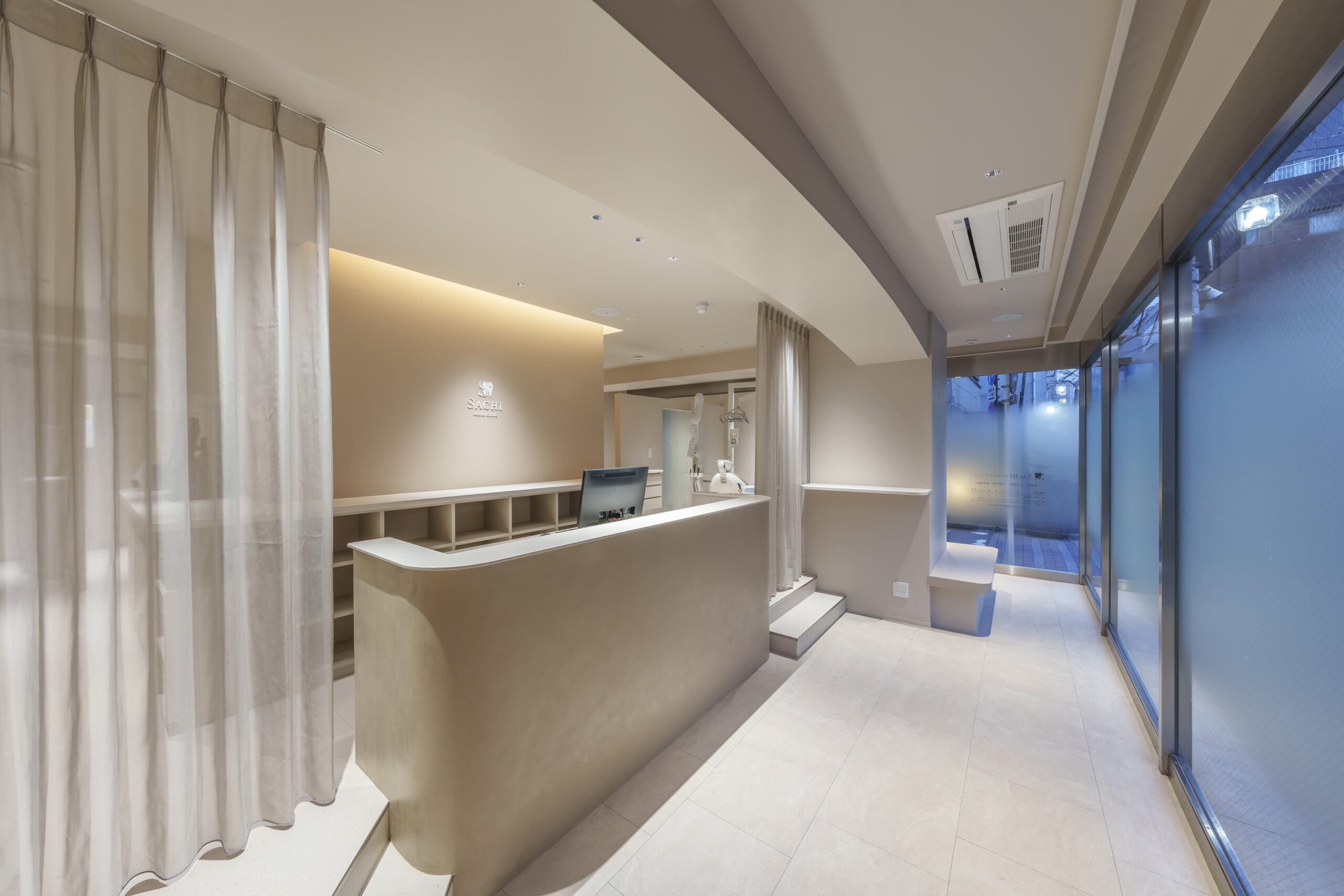Root Canal Treatment
Publication Date:
Last Updated:
- What is Root Canal Treatment?|how to Treat Tooth Decay that Has Reached the Nerve
- Differences between Pulp Extirpation and Infected Root Canal Treatment
- Flow of Root Canal Treatment at SACHI Dental Clinic
- Perforation Repair|Special Treatment for Holes in Teeth
- Why SACHI Dental Clinic is Chosen|Commitment to Precision Root Canal Treatment
- Frequently Asked Questions (FAQ) about Root Canal Treatment
- View Other Treatment Options
What is Root Canal Treatment?|how to Treat Tooth Decay that Has Reached the Nerve

Root canal treatment is performed when tooth decay has progressed to the dental nerve (pulp) or when pus has accumulated at the tip of the tooth root. It is commonly referred to as “nerve removal treatment” or “nerve treatment.” The aim is to preserve the tooth without extraction by removing contaminated nerves and bacteria, thoroughly cleaning and disinfecting the root canal, and filling and sealing it with medication.
The main symptoms that require root canal treatment are as follows:
- Throbbing, severe pain
- Sensitivity to cold or hot
- Pain when biting
- Swollen gums
- Pus accumulation at the tip of the tooth root
If you have these symptoms, you may need root canal treatment. If root canal treatment is left untreated, there is a risk that tooth extraction will eventually be necessary or that bacteria will spread throughout the body. If you feel any discomfort, see a dentist as soon as possible.
Differences between Pulp Extirpation and Infected Root Canal Treatment

Root canal treatment is broadly divided into two types: “pulp extirpation” and “infected root canal treatment.” At SACHI Dental Clinic, we are committed to minimizing the risk of recurrence and preserving teeth as much as possible with precise treatment using microscopes and rubber dams in both treatments.
Pulp Extirpation – Treatment for Cases where Tooth Decay Has Reached the Nerve
Pulp extirpation is a treatment method performed when tooth decay is extensive and has reached the nerve. The nerve infected with the bacteria of tooth decay is removed, and the root canal is thoroughly cleaned and disinfected. We also provide precise treatment for those searching for “Pulp Extirpation Mita.”
The pulp extirpation procedure is as follows:
- Anesthesia: Local anesthesia is administered to reduce pain during treatment. At our clinic, we use topical anesthesia and electric anesthetic injectors to minimize the pain of anesthetic injections.
- Removal of Tooth Decay: A caries detection liquid, a drug that stains the decayed part, is used to thoroughly remove the tooth decay. At this time, by using a microscope, the tooth decay is precisely removed while checking even the parts that are difficult to see with the naked eye.
- Nerve Removal: The infected nerve is removed using dedicated instruments called reamers and files.
- Root Canal Cleaning/Disinfection: The root canal is cleaned and disinfected using medication. At our clinic, we may also use ultrasonic cleaning to enhance the cleaning effect.
- Root Canal Filling: Once the root canal is clean, a rubber-like material called gutta-percha points is packed tightly (root canal filling).
- Formation of Core/Placement of Crown: Teeth that have undergone root canal treatment often have little remaining tooth structure and are thin, so a core is built to reinforce them, and a crown is placed on top.
At our clinic, we use a method called rubber dam moisture control to cover the teeth being treated with a rubber sheet to prevent saliva and bacteria from entering, and to perform treatment in a clean environment. In addition, by using an instrument made of a special metal called a NiTi file, we can treat even complex root canals and achieve more precise treatment. Through these efforts, we are working to improve the “Root Canal Treatment Success Rate.”
Infected Root Canal Treatment – Treatment for Teeth That Have Had Nerve Treatment in the Past or Teeth Whose Nerves Have Died
Infected root canal treatment is a treatment method performed on teeth that have been previously treated for nerves but have become infected again, or on teeth whose nerves have died due to neglected tooth decay. Many cases that require “Root Canal Retreatment” fall under this infected root canal treatment.
The main causes that require infected root canal treatment are as follows:
- There were inadequately treated areas in the previous root canal treatment
- A gap formed between the crown and the tooth, allowing bacteria to enter
- A gap formed around the tooth due to periodontal disease, allowing bacteria to enter
- Tooth decay or periodontal disease has progressed, and pus has accumulated at the tip of the tooth root
Infected root canal treatment differs from pulp extirpation in the following ways:
- It is necessary to remove crowns, cores, drugs, etc. that were placed in previous treatments
- The root canal often has a complex shape, making treatment more difficult
- Recurrence often occurs, and treatment may take a long time
In infected root canal treatment, it is important to thoroughly remove bacteria that were left behind in previous treatments and newly invaded bacteria. At our clinic, we use a microscope to observe the inside of the root canal in detail, identify the source of infection, and remove it.
Flow of Root Canal Treatment at SACHI Dental Clinic

At our clinic, root canal treatment is performed in the following steps:
Treatment Flow for Pulp Extirpation
1. Anesthesia/Removal of Tooth Decay
First, local anesthesia is administered to reduce pain during treatment. After that, caries detection liquid is used to thoroughly remove tooth decay. At this time, by using a microscope, it is possible to accurately remove even small cavities that are easily overlooked with the naked eye.
In addition, we also check for cracks or fractures in the teeth at the same time. Cracks and fractures not only cause pain, but also affect the success rate of root canal treatment, so it is important to detect them early.
If the range of tooth decay is large and the amount of tooth remaining is small, a base (partition wall) for applying a rubber dam may be created using resin. This prevents saliva and bacteria from entering the root canal during treatment, increasing the success rate of treatment.
2. Nerve Removal/Root Canal Cleaning/Disinfection
After removing the tooth decay, the infected nerve is removed using dedicated instruments called reamers and files. Next, the root canal is thoroughly cleaned and disinfected using drugs such as sodium hypochlorite. At this time, by performing rubber dam moisture control, it is possible to prevent the invasion of saliva and bacteria and perform treatment in a clean environment.
In addition, our clinic uses instruments made of a special metal called NiTi files. NiTi files are more flexible than conventional stainless steel files, so they can handle complex root canals. Furthermore, by using a microscope together, it is possible to observe the inside of the root canal in detail and remove infected nerves and bacteria as reliably as possible.

3. Root Canal Filling
Once the root canal is clean, the final medication is packed into the root canal (root canal filling). Gutta-percha points, a rubbery material, are usually used for root canal filling.
The purpose of root canal filling is to completely seal the root canal and prevent bacteria from re-entering. If the root canal filling is insufficient, the risk of recurrence increases, so this is a very important step.
4. Formation of Core/Placement of Crown
Teeth that have undergone root canal treatment often have thin teeth, so a core is built to reinforce them, and a crown is placed on top. There are various types of cores, such as metal and fiber posts. At our clinic, we will propose the optimal core and crown according to the patient’s tooth condition and wishes.
Flow of Infected Root Canal Treatment
The flow of infected root canal treatment is basically similar to pulp extirpation, but a step is added to remove crowns, cores, drugs, etc. that were placed in previous treatments. In addition, more careful treatment is required because the infection has recurred.
1. Anesthesia/Removal of Infection Source
Local anesthesia is performed as needed, and tooth decay, old crowns, drugs, etc. that were placed in previous treatments are removed. At this time, by using a microscope, it is possible to identify the source of infection and minimize the amount of residue left behind. The use of “Root Canal Treatment Microscope” is essential for precise treatment.
In addition, by performing rubber dam moisture control and covering the teeth to be treated with a rubber sheet, we prevent the invasion of saliva and bacteria and perform treatment in a clean environment. This can reduce the risk of reinfection. The use of “Root Canal Treatment Rubber Dam” is important to increase the success rate of treatment.
2. Root Canal Cleaning/Disinfection
After removing the source of infection, the root canal is thoroughly cleaned and disinfected using medication. At our clinic, we may also use ultrasonic cleaning to enhance the cleaning effect. In addition, by checking the inside of the root canal with a microscope and using NiTi files together, it is possible to effectively remove bacteria even in complex root canals.
Especially in the case of retreatment, bacteria that were left behind in previous treatments or newly invaded bacteria may have entered the complex grooves in the root canal. It is important to thoroughly remove these bacteria while magnifying and checking the inside of the root canal with a microscope in order to prevent recurrence. Therefore, the number of treatments may increase.
3. Root Canal Filling
Once the root canal is clean, root canal filling is performed using gutta-percha points, etc., as in pulp extirpation. The filling material is packed tightly into the root canal without any gaps.
4. Formation of Core/Placement of Crown
Teeth that have undergone root canal treatment are often brittle, so a core is built to reinforce them, and a crown is placed on top. At our clinic, we will propose the optimal core and crown according to the patient’s tooth condition and wishes.
Perforation Repair|Special Treatment for Holes in Teeth
Perforation is a condition in which a hole has formed in the tooth due to excessive tooth decay or accidentally creating a hole with an instrument during root canal treatment. If perforation is left untreated, bacteria can enter from there and the infection can spread, and in most cases, tooth extraction is unavoidable.
At our clinic, we perform a special treatment called perforation repair to seal the hole and explore the possibility of saving the tooth. In perforation repair, a special material called MTA cement is used to seal the hole. MTA cement has excellent biocompatibility and high sealing properties, making it a suitable material for perforation repair. Please feel free to contact us even if you have been diagnosed with a need for “Perforation Repair.”
However, not all perforations can be repaired. Tooth extraction may be necessary depending on the size and location of the hole, the extent of the infection, etc. At our clinic, we use dental CT and microscopes to accurately diagnose the condition of the perforation and propose the optimal treatment method.
Why SACHI Dental Clinic is Chosen|Commitment to Precision Root Canal Treatment

SACHI Dental Clinic has introduced the following equipment and technologies to provide precise root canal treatment.
Use of Microscopes
Our clinic uses microscopes for root canal treatment. By using a microscope, it is possible to magnify and check the inside of the root canal, which is invisible to the naked eye, by approximately 20 times, enabling more precise treatment. “Root Canal Treatment Microscope” is an indispensable instrument for increasing the success rate of treatment.
Precise Root Canal Treatment Using a Microscope
Rubber Dam Moisture Control
During root canal treatment, the teeth being treated are covered with a rubber sheet using a method called rubber dam moisture control. This prevents the invasion of saliva and bacteria, allows treatment to be performed in a clean environment, and increases the success rate of root canal treatment. “Root Canal Treatment Rubber Dam” is a very effective method for preventing reinfection.
Use of NiTi Files
Our clinic uses instruments made of a special metal called NiTi files for root canal treatment. NiTi files are more flexible than conventional stainless steel files, so they can handle complex root canals. In addition, the use of NiTi files allows for efficient cleaning and shaping of the root canal, which also leads to shorter treatment times. “NiTi files” enable complex root canal treatment.
Precise Diagnosis with Dental CT
Our clinic has introduced dental CT to perform precise diagnosis before root canal treatment. By using dental CT, it is possible to grasp the shape of the root canal, the size and location of the lesion, etc., which could not be determined with conventional X-rays, in three dimensions, and to create a safer and more reliable treatment plan. “Root Canal Treatment CT” examination improves the accuracy and safety of treatment.
Treatment with Consideration for Pain
Our clinic makes various efforts to ensure that patients can receive treatment without feeling pain. We make efforts to minimize the pain of anesthetic injections, such as using topical anesthesia, electric anesthetic injectors, and thin injection needles.
Careful Explanation and Treatment by a Female Director
At our clinic, we strive to provide careful explanations and treatment by a female director. We are committed to providing easy-to-understand and careful explanations that address patients’ concerns and questions. In addition, we will propose the optimal treatment for each patient from a uniquely female perspective. If you are worried about “Root Canal Treatment Pain,” please feel free to contact us.
Frequently Asked Questions (FAQ) about Root Canal Treatment

- Is root canal treatment painful?
- Anesthesia is used during root canal treatment, so you will hardly feel any pain. If the inflammation is strong, the anesthesia may not work well, so we will start treatment after anti-inflammatory treatment. However, you may experience pain or discomfort after the anesthesia wears off. It usually subsides within a few days, but if the pain persists or is severe, please contact us.
- How many times does root canal treatment take?
- The number of root canal treatments varies depending on the size of the cavity, the shape of the root canal, the degree of infection, etc. Usually, about 3 to 4 visits are required, but more visits may be required for complex cases. Our clinic strives to reduce the number of treatments as much as possible by performing precise treatment using a microscope.
- What is the success rate of root canal treatment?
- The success rate of root canal treatment varies depending on the type of tooth, the shape of the root canal, the degree of infection, etc. Our clinic strives to increase the success rate of root canal treatment by utilizing the latest equipment and technologies such as microscopes, rubber dam moisture control, and NiTi files. Post-operative care is also important to increase the “Root Canal Treatment Success Rate.”
- What are the precautions after root canal treatment?
- Please note the following points after root canal treatment.
- Avoid biting hard objects with the treated tooth
- Avoid touching the treated tooth with your fingers or tongue
- Take the prescribed medication as directed
- If pain or swelling persists, please contact us as soon as possible
- How much does root canal treatment cost?
- The cost of root canal treatment is basically covered by health insurance. However, the cost may vary depending on the instruments and materials used, the difficulty of the treatment, etc. In addition, there are crowns that can be covered by insurance and those that are not covered by insurance that can be attached after root canal treatment. Please ask for details during the counseling session.
View Other Treatment Options
Treatment Menu
Types of Ceramic Treatments and how to Choose
Treatment Menu
Bite Alignment Treatment
Treatment Menu
Wisdom Teeth
Treatment Menu
Pediatric Dentistry
Treatment Menu
Orthodontics Invisalign
Treatment Menu
Dental Check-ups and Preventive Dentistry
Treatment Menu
Periodontal Disease Treatment
Treatment Menu
Whitening
Treatment Menu
Cosmetic Dentistry

